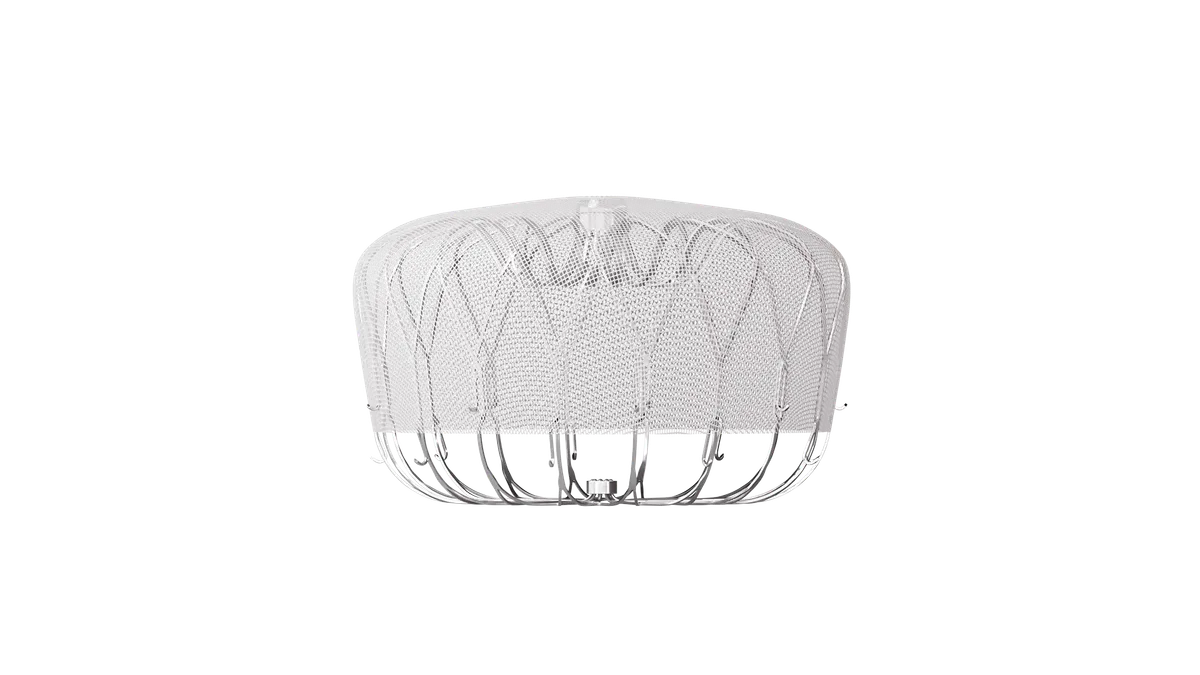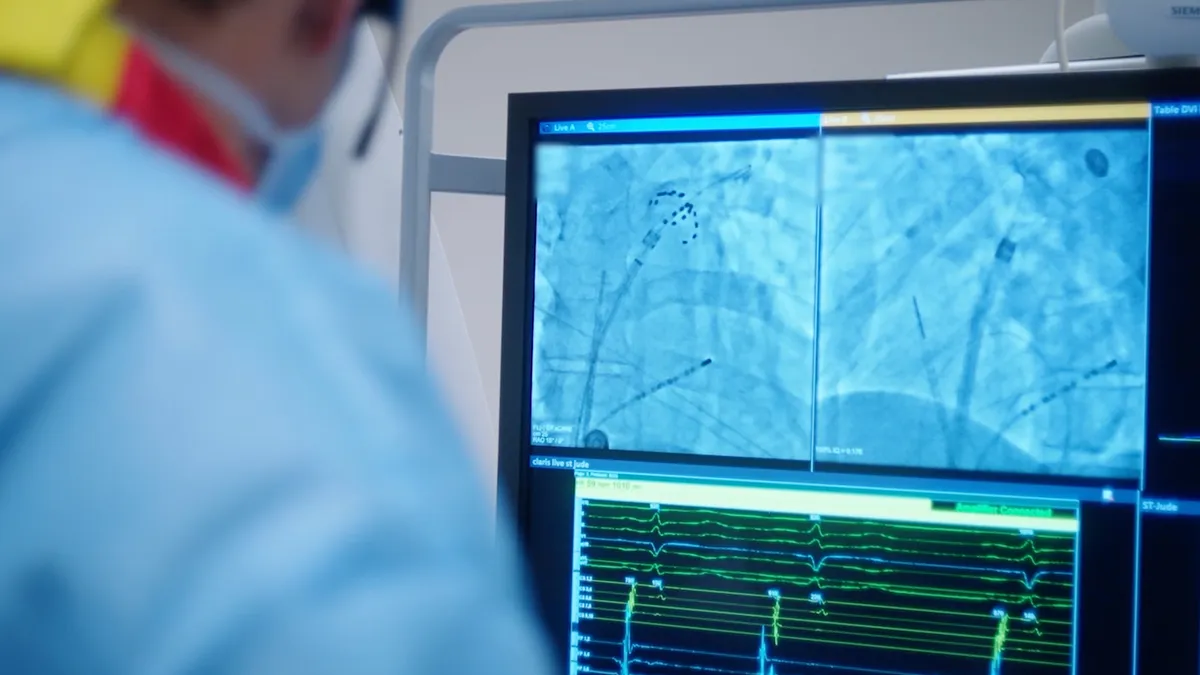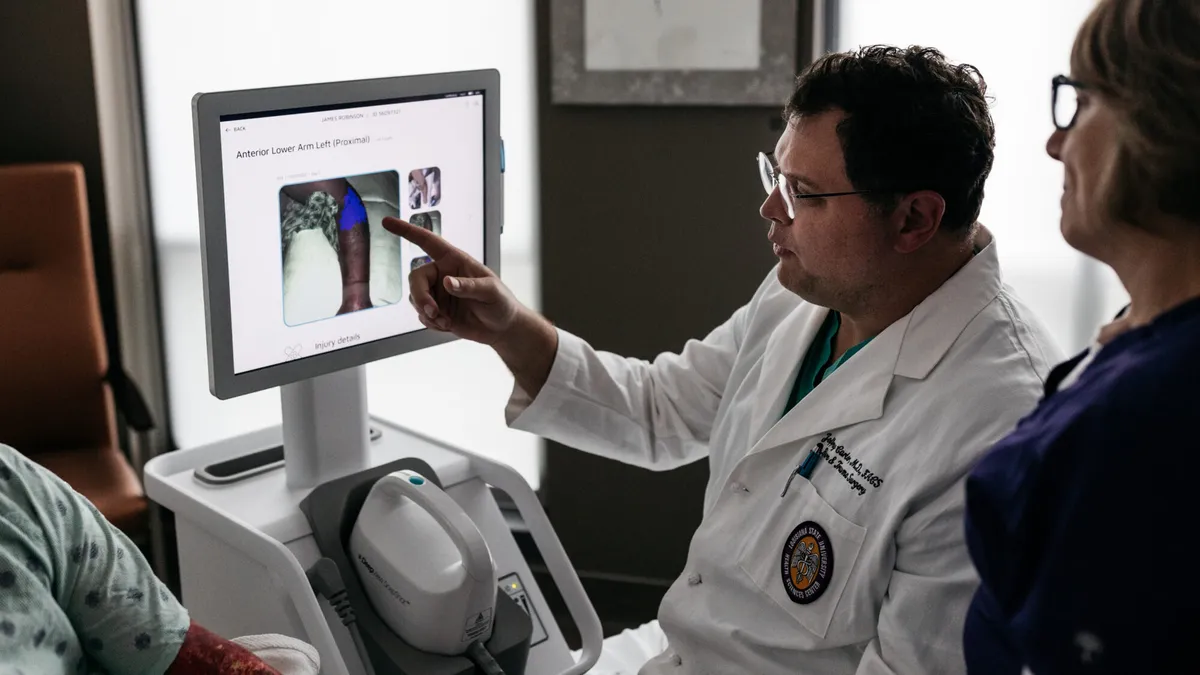The first head-to-head clinical comparison of the current left atrial appendage closure devices from Abbott Laboratories and Boston Scientific has delivered mixed results, with both products outperforming the other against certain endpoints.
Abbott won FDA approval for Amplatzer Amulet earlier this year, positioning it to challenge Boston Scientific's Watchman monopoly of a fast-growing market. The existing case in favor of Amulet rests on a study that compared Amulet to an older version of the Boston Scientific device, Watchman 2.5. Researchers linked Amulet to a higher rate of left atrial appendage closure than Watchman 2.5, suggesting the Abbott device is better at sealing off the structure and preventing leaks.
However, the comparison to the older Boston Scientific device left scope to question whether Amulet would outperform the Watchman device that is currently in use. In a paper published in Circulation, and presented at the Transcatheter Cardiovascular Therapeutics conference, the European researchers behind the SWISS-APERO trial have provided a preliminary answer to that question.
Irregular heartbeats from atrial fibrillation can cause blood to build up in a small pouch, or appendage, located in the left atrium of the heart, where the blood can then clot and cause a stroke if those clots are pumped through the body and reach the brain. LAAC devices close up the left atrial appendage, preventing blood from pooling and clotting in the appendage.
The SWISS-APERO clinical trial randomized around 200 patients to receive either Amulet or the current version of the Boston Scientific device, Watchman FLX, which came to market during the study. Almost 80% of patients in the Watchman cohort received the current device, with the rest receiving the older model used in the previous head-to-head clinical trial with Amulet.
Amulet was no better than Watchman against the primary endpoint of left atrial appendage patency at 45 days, with 67.6% of patients in the Abbott group and 70% of subjects in the Boston Scientific cohort hitting that measure. Restricting the analysis to the newer Boston Scientific device delivered a similar result, with 71.6% of patients in the Amulet arm and 71.4% of people in the Watchman FLX meeting the patency endpoint.
No clear difference was evident in clinical outcomes at 45 days but other endpoints did point toward potential pros and cons of the two devices. The peridevice leak rate in the Watchman group, 27.5%, was twice that seen in the Amulet arm, 13.7%. The only two cases with multiple leaks happened in the Watchman arm, but none of the cases were deemed to be major.
The findings are in line with the results of the earlier trial that compared Amulet to Watchman 2.5. However, it still remains unclear whether the difference is clinically significant. The data on the link between leaks and clinical outcomes has limitations, but there are studies that suggest there may be benefits to Abbott's device. One retrospective study linked new peridevice leaks at 45 or 90 days to a two-fold greater combined outcome of a composite cardiovascular endpoint.
Against other measures, Watchman may have an advantage over Amulet. The trial linked Watchman to a lower rate of major procedure-related complications, 2.7%, compared to Amulet at 9%. The difference was driven by more frequent bleeding in the Amulet arm than the Watchman cohort, which was 7.2% and 1.8%, respectively, and may partly reflect greater familiarity with the Boston Scientific devices.
The question of whether the potential advantages of either device translate into a significant edge will likely remain unresolved until a clear difference in clinical outcomes is shown in a well-powered trial.
J.P. Morgan analysts wrote that results from the SWISS-APERO "seemed to reaffirm the findings of the Amulet IDE, and don't think this smaller trial will change the narrative between Abbott vs. Boston Scientific." Although, the analysts did highlight the higher rate of procedure complications for Amulet.
In SVB Leerink polls conducted ahead of the recent trial results, physicians projected that Amulet would steal market share from Watchman almost immediately, but Boston Scientific's device would remain as the market leader.
Differences persist out to 1 year
Other researchers used TCT 2021 to present updated data on the Amulet IDE trial that compared the Abbott device to the older Watchman 2.5. The one-year analysis broadly concurred with the 45-day findings, when Amulet was found to have an advantage in terms of the proportion of patients with moderate peridevice leaks.
After one year, 10% of patients in the Amulet arm had moderate peridevice leaks, compared to 22% of their peers in the Watchman cohort. The finding is in line with the 11% and 26% leak rate seen in the Amulet and Watchman cohorts, respectively, after 45 days. Patients in the Amulet arm who had leaks at 45 days were less likely to still have leaks at one year than their counterparts in the Watchman group.
In presenting the results, the researchers said the superiority of Amulet in terms of achieving full, leak-free left atrial appendage closure could allow patients to stay off oral anticoagulants without raising their risk of stroke. However, the study compared Amulet to the older Watchman device and the clinical impact of the leak rate remains unclear.
Ruby Satpathy, medical director of the structural heart program at Baptist Medical Center, told MedTech Dive that surgeons will likely choose which LAAC device to use depending on the anatomy of patients' appendages and surrounding structures.
"It's going to be very patient-centric," said Satpathy, who was an investigator for the Amulet IDE trial. "There is going to be a place for some patients that Amulet is going to be better, some Watchman is going to be better."
Satpathy said that the criticisms of comparing Amulet to an older device were fair but argued that Amulet's design is better for appendage closure, even compared to Watchman FLX. Satpathy added that Amulet also has an advantage in a little more data showing healing with a shorter duration of drug use, which may increase clinicians' comfort using Amulet in patients that cannot be on blood-thinning drugs for a long period of time or at all.
Other researchers presented three-year data at TCT 2021 comparing Amulet and Watchman to non-warfarin oral anticoagulants. The study found the LAAC devices were non-inferior to the pharmacological options at preventing major cardiovascular and neurological events in high-risk patients with atrial fibrillation. In the long term, non-procedural bleeding was significantly reduced by treating patients with a LAAC device rather than anticoagulants.
Ricky Zipp contributed reporting to the article.


















